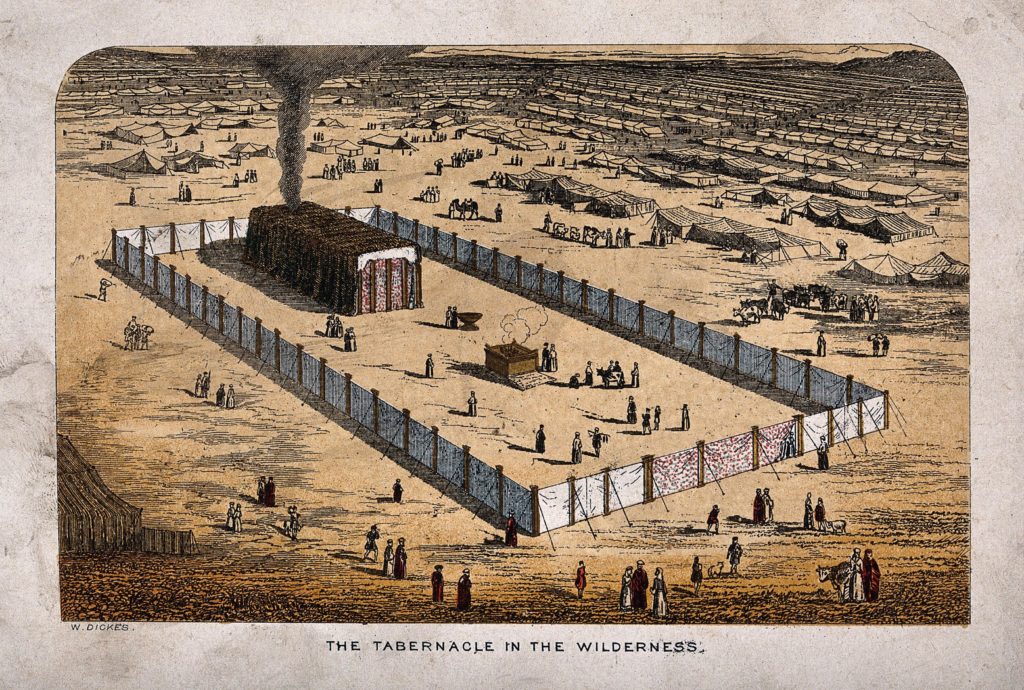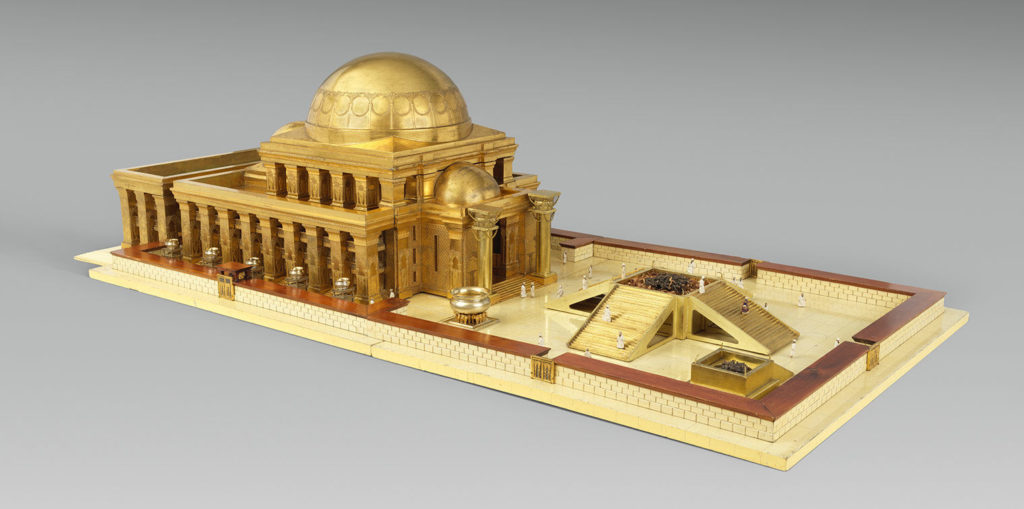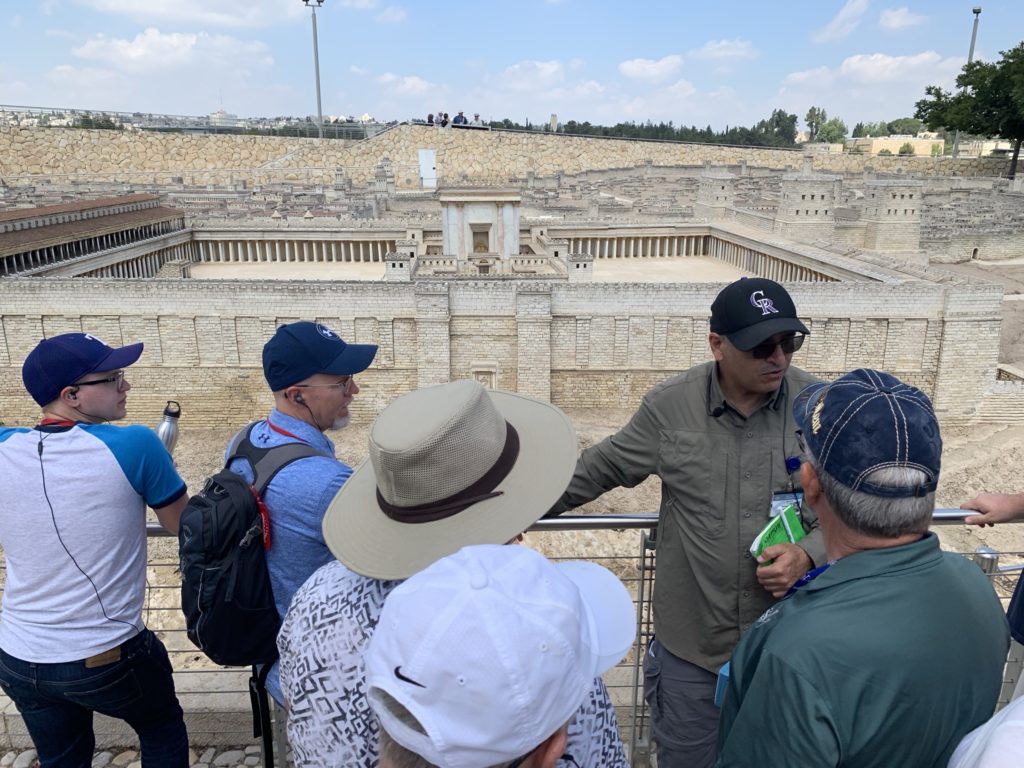Yesterday’s parade marked the beginning of holy week and the slow crawl toward’s Friday’s crucifixion. This morning I found a handy map in the back of my Holy Land Illustrated Bible and I’m hoping to follow it’s plot points over the next seven days. I’m grateful to finally be in a season of life where I can slow my soul to match the excruciating pace of passion week.

(By the way: this week I learned that the word ‘excruciating’ means ‘out of the cross’ – it’s a word solely invented to describe the level of pain experienced during crucifixion. Thanks, Levi)
Today we turn the page from from Palm Sunday’s excitement to Monday morning’s responsibilities. If you recall, Jesus entered the city on Sunday amidst palms, prayer shawls and praises. He rode that borrowed donkey straight to the Temple, but we aren’t sure why. Mark let us in on his confusion; he wrote how Jesus looked around at everything, noted the time of day and then turned around to climb back to Bethany with His disciples. Strange, right?
Jesus woke up on mission, though. Monday morning broke and He immediately made the trek to back to the Temple with disciples in tow; only pausing long enough to curse a barren fig tree along the way. (We’ll come back to that in a bit.)
“And they came to Jerusalem. And He entered the temple and began to drive out those who sold and those who bought in the temple, and He overturned the tables of the moneychangers and the seats of those who sold pigeons.” (Mark 11:15 ESV)
Jesus seemed to lose it. At first glance, we might think He was mad and reacted rashly. But remember, Jesus had been to the Temple before, many times throughout His life. He was not a stranger to His Father’s house, I’m guessing proposing it was the most familiar place on earth for Him. Not only that, but He had come in and assessed the situation the night before. But no one was there. It seems Jesus intentionally waited until He had an audience. Oh, and lest we forget, Jesus was perfect. He didn’t sin.
This all brings me to believe that Jesus wasn’t throwing a premeditated fit. He was making a point.

Let’s backtrack a bit, Solomon’s temple wasn’t Solomon’s design. It was a reproduction of the Tabernacle. And the Tabernacle was one hundred percent God’s design, down to the last stitch, as detailed in Exodus 24-31. The thing is, Solomon had enlarged it. He added some storage rooms on the side for the priests. (Storage rooms that would host some ungodly activities during dark leadership days.) Solomon also included a colonnade, which happened to be an outward sign of wealth and stature to those visiting from other nations.

Of course, Solomon’s temple was destroyed but the Babylonians. Turns out this was actually God’s act of purification, He was making atonement for the acts of the wicked priests. Then the Israelites went without a Temple for a while until they finally scraped things together enough to reconstruct what is known as the Meager Temple. You can imagine about how grand that was by the implications of the name. The Jews had been humbled substantially by their exile. The Meager Temple was fine until Herod the Great came along and wanted to prove his Jewishness by way of his pocketbook. He funded what we historically call Herod’s Temple and, again, further expounded upon God’s original, good design. Herod had the entire Temple Mount built up by huge blocks and he expanded Solomon’s Colonnade into a tremendous porch where a wide variety of activities could take place: including the buying and selling of goods and the exchange of money.

By Jesus’ time, what had began as a simple, beautiful and singularly focused place of prayer and worship had become a huge, sprawling circus. All of the extra marketing and trade happened in the Outer Court and this is significant because the Outer Court was as far as most worshipers could go. The Inner Court was reserved for priests and perhaps men (my sources were conflicted on exclusions). Where the Inner Court was exclusive, the Outer Court was the commoner’s court: women, Gentiles, foreigners. Almost anyone could set foot in the first court of the Temple.
Now picture it with me. You are a first century God-follower, and have come a long ways to worship. Every visitor to Jerusalem climbed uphill to get there. Your trip was as exhausting as it was dangerous. You finally arrive at the Temple ready to humbly offer your sacrifice and hoping personally experience God. As a woman or Gentile, that first court was the greatest access you were awarded, it was as close as you could get. You step inside expecting to find a place of spiritual rest: peace and quiet and a worshipful atmosphere. And instead you are met with the shouts of money changers and the bleating of sheep. The pigeons are making a racket and the whole place smells like unwashed people and animal excrement. But this is your best option. You can’t step any further into the sanctuary. If you press your face close to the outer wall of the inner court and strain your ears, you may be able to hear the muffled prayers of holier men, but that sanctuary is utterly out of reach for you.
Doesn’t this scene put Jesus’ words in context?
“And He was teaching them and sang to them, “Is it not written, ‘My house shall be called a house of prayer for all the nations’? But you have made it a den of robbers.” (Mark 11:17 ESV)
I have been raised in church to believe that Jesus was calling out all those who were turning a profit on the requirements of worship, but today I see something so much bigger. Jesus had seen the original Temple design. He had spent eternity in fellowship with His Father, and the tabernacle on earth was a crude replica of the real throne in heaven. Jesus could clearly articulate every change, every ‘upgrade’ upon His Father’s good instruction and He found the new, improved Temple experience to be detestable.
The women, the Gentiles and the foreigners were being deprived of their rare opportunity to commune with God because the marketplace had overtaken the Outer Court. This is why Jesus calls it a den of thieves: the merchants and money changers were robbing God! Not of funds, but of far more precious prayer and worship! The commotion could not be overcome and God was being shortchanged of the glory He was due.
The slow transformation of the Temple is just one piece of the puzzle, though. Just as the original divine structure had been tweaked and expanded, so had the Law. The pharisees and priests had been making addendums and insertions for centuries. The heart of God’s Law had been buried beneath hundreds of man-made traditions and additions. What was meant to be life-giving had become terribly burdensome!
Let’s circle back to that fig tree – the one Jesus had cursed on His morning commute.
“And seeing in the distance a fig tree in leaf, He went to see if He could find anything on it. When He came to it, He found nothing but leaves, for it was not the season for figs. And He said to it, “May no one ever eat fruit from you again.” And the disciples heard it.” (Mark 11:13-14 ESV)
The fig tree had made a good showing. It was full of leaves, it looked to be healthy and growing, but when the branches were pushed aside, there was no fruit. It hadn’t produced anything tangible. It doesn’t even read like Jesus found buds, He doesn’t seem to see even the hope of future fruit.
Commentators make the connection between the fig tree and the priests; how they had made a good show of things and had plenty of time to produce something beneficial to the Kingdom, but had failed entirely. Jesus was about to uproot them from their position of power as surely as He cursed the fig tree. And I agree with all of that, but today I also see the fig tree as a living example of the Temple. This beautiful house of God, with all it’s improvements and expansions was full of leaves, but no fruit.
And maybe the fig tree represents the Law, too. The Law began as such a good thing: helping man know healthy limitations and laying out boundaries for godly lives. But the priests had added so many stipulations, expectations and limitations; they had buried the Law in fruitless foliage. They were offering God’s people nothing that could sustain them.
If we are familiar with bible history, we know the law would be fulfilled and the Temple would be destroyed. There was a New Kingdom coming, a Kingdom where fruit production would be the main focus.
Jesus returned to this fig tree the next morning. His disciples were astonished to find the tree withered away, from the roots up. This had to be pretty dramatic for them to notice, typically plants whither from the outermost to the innermost. It’s also notable that fig trees are a hardy breed. But Jesus had cursed it and it had died overnight.
Pay attention here: the disciples point out the shriveled tree and Jesus speaks to them about prayer.
“And Jesus answered them, “Have faith in God. Truly, I say to you, whoever says to this mountain, ‘Be taken up and thrown into the sea’ and does not doubt in his heart, but believes that what he says will come to pass, it will be done for him. Therefore I tell you, whatever you ask in prayer, believe that you have received and it will be yours. And whenever you stand praying, forgive, if you have anything against anyone, so that your Father also who is in heaven may forgive you your trespass.”
Jesus dismissed the fig tree and called them back to prayer. He reminded His disciples and us that the singular way we will produce anything of Kingdom value will be through prayer. This is why the commotion in the Temple was so concerning: it was interfering with the one function that produces fruitfulness. Prayer is our connection with God, our most meaningful exchange in the universe. Prayer is the activity that transforms us intimately, and thus it is an expensive discipline to develop. This is why the enemy runs constant interference, he knows what God can accomplish through prayer! Note also, what Jesus reminded: unforgiveness will always impede our prayer life. Our sin will stand in the way of answered prayers.
Cool story, but how does it apply to us? Considering all of this, I keep coming back to one question. It’s a hard question, but it might legitimately be a God question. It’s something for us to prayerfully consider as we are perched here on Monday morning, struggling to set out into holy week.
How do I rob God?
Is it tithes? Is it worship? Is it prayer?
Where exactly are the holdouts in our life where we keep grasp things that are meant to be given unto Him? What has He asked us for, that we have held back? Hoarded? Even hid from Him?
Lord, this morning You have overturned tables and our hearts. Forgive us! We see it clearly now, all the seemingly insignificant ways we pilfer praise and prayer from a holy God. We are so terribly distracted by the side show in the portico. Forgive us for our inattentiveness. Forgive us for our selfishness. May we grow to give You the firstfruits of our everything, and more if You have need of it. Remake us as generous instead of larcenous, supplying instead of stealing, magnanimous instead of misappropriating. May we give as You have given: freely, fully and without regard for self. Let us walk slowly, fully with You the full length of this week. Amen.